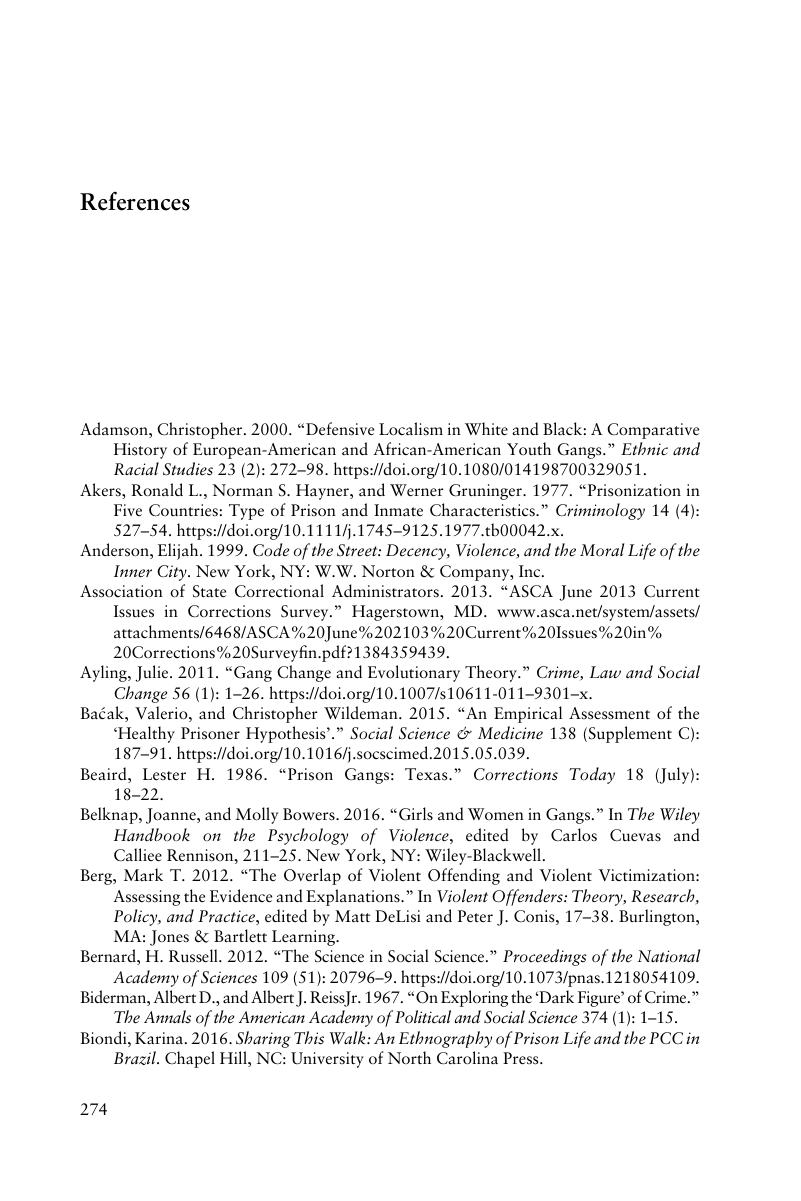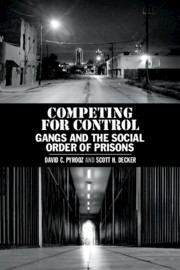Book contents
- Competing for Control
- Competing for Control
- Copyright page
- Contents
- Figures
- Tables
- Acknowledgments
- 1 Foundation for the Study
- 2 Understanding Gangs in Prison
- 3 The LoneStar Project
- 4 The Characteristics of Gang Members in Prison
- 5 The Characteristics of Gangs in Prison
- 6 The Role of Gangs in the Social Order of Prisons
- 7 Misconduct and Victimization in Prison
- 8 Joining and Avoiding Gangs in Prison
- 9 Continuity and Change in Prison Gang Membership
- 10 Implications of Competing for Control
- Appendix Preliminary Evaluation of the Gang Renouncement and Disassociation Program
- References
- Index
- References
References
Published online by Cambridge University Press: 09 August 2019
- Competing for Control
- Competing for Control
- Copyright page
- Contents
- Figures
- Tables
- Acknowledgments
- 1 Foundation for the Study
- 2 Understanding Gangs in Prison
- 3 The LoneStar Project
- 4 The Characteristics of Gang Members in Prison
- 5 The Characteristics of Gangs in Prison
- 6 The Role of Gangs in the Social Order of Prisons
- 7 Misconduct and Victimization in Prison
- 8 Joining and Avoiding Gangs in Prison
- 9 Continuity and Change in Prison Gang Membership
- 10 Implications of Competing for Control
- Appendix Preliminary Evaluation of the Gang Renouncement and Disassociation Program
- References
- Index
- References
Summary

- Type
- Chapter
- Information
- Competing for ControlGangs and the Social Order of Prisons, pp. 274 - 292Publisher: Cambridge University PressPrint publication year: 2019

